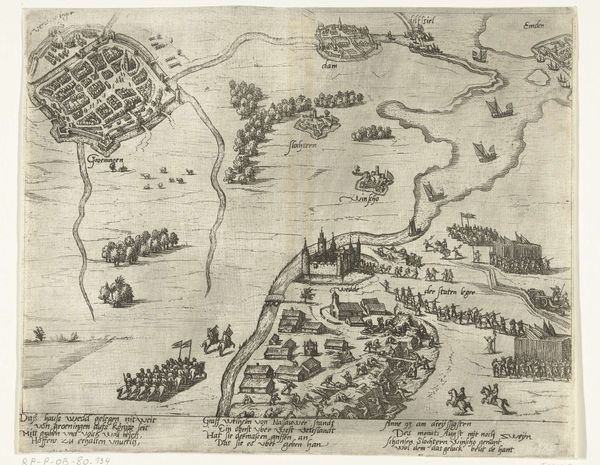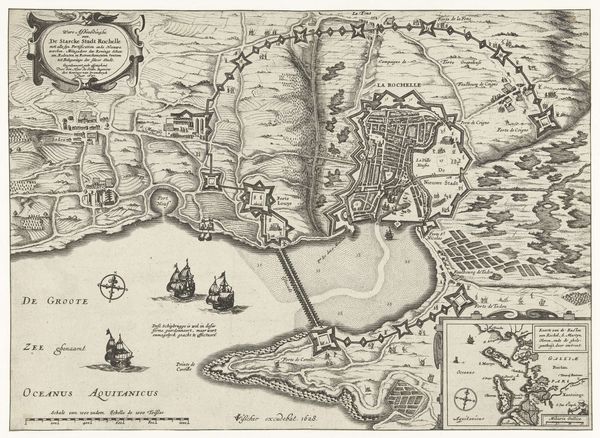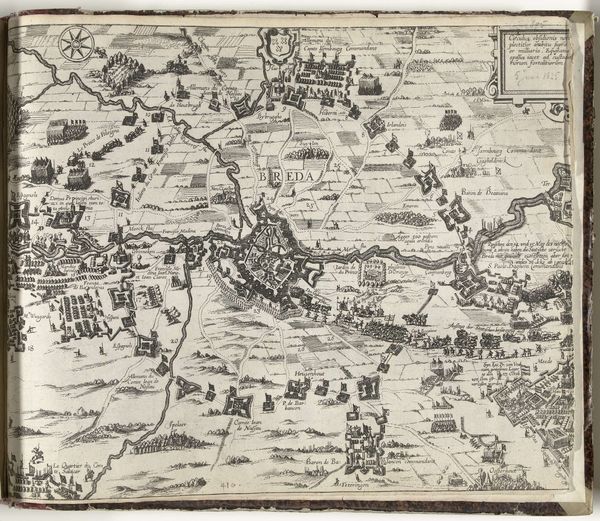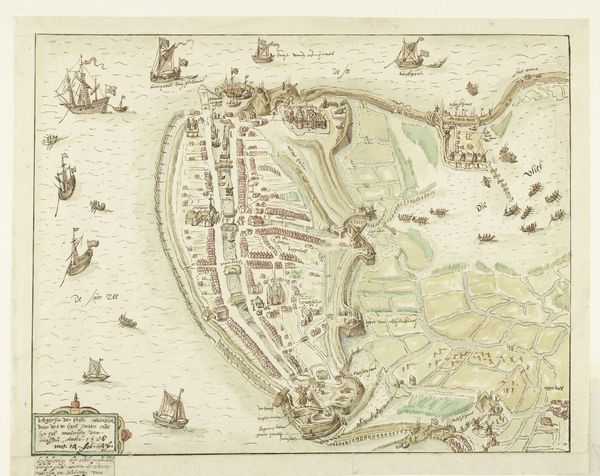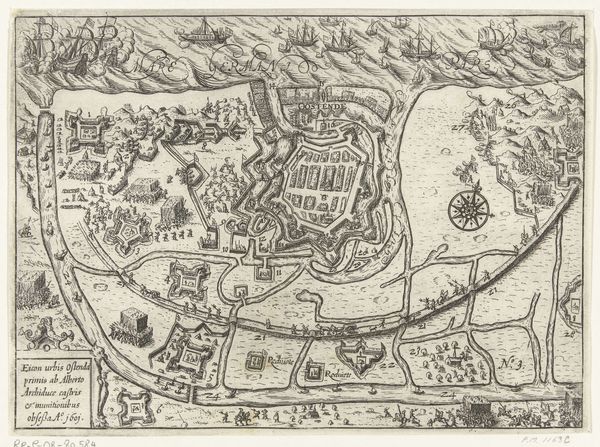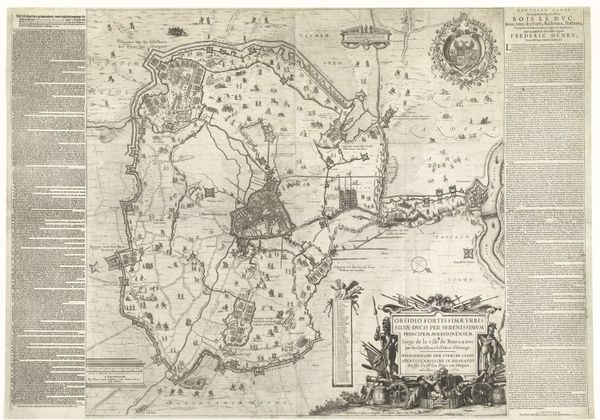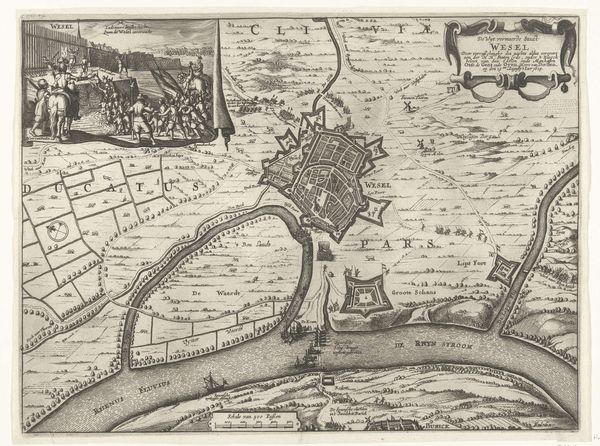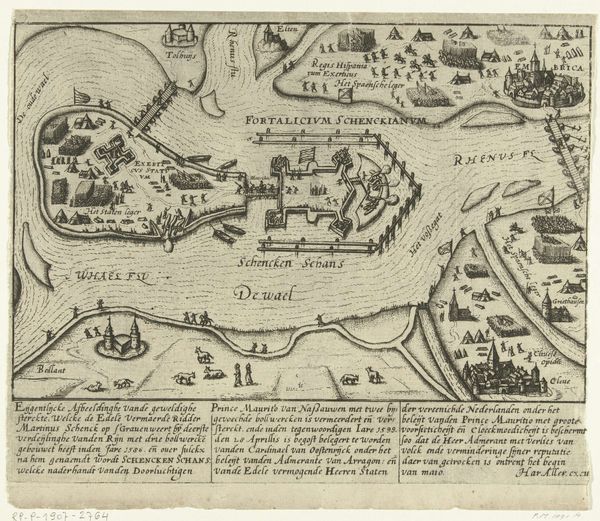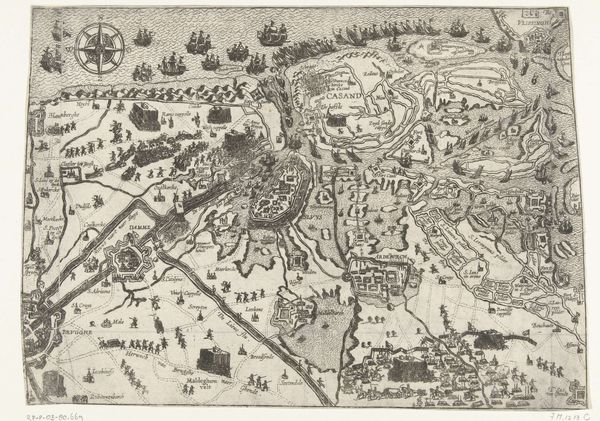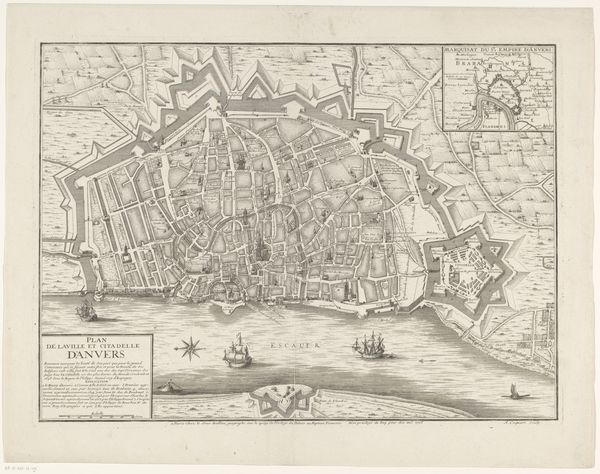
drawing, print, ink, engraving
#
drawing
#
pen drawing
# print
#
landscape
#
ink
#
cityscape
#
history-painting
#
engraving
Dimensions: height 312 mm, width 407 mm
Copyright: Rijks Museum: Open Domain
Editor: Here we have "Beleg van Gulik, 1610," a drawing in ink and a print engraving from 1610, held here at the Rijksmuseum and attributed to an anonymous artist. It seems to depict a town under siege. What symbols and hidden meanings might be layered into this kind of historical rendering? Curator: The entire image *is* the symbol. Consider the city itself, Gulik. Visually, it’s a contained, almost uterine space, under attack. The lines, meticulously etched, speak to a desire for control and understanding of this conflict through cartography. The map isn't just informative; it's a form of psychological containment. Does the regimented layout suggest anything to you about societal values of the time? Editor: It feels very structured and rigid, perhaps representing a desire for order and control during a period of upheaval. How did the people who lived during this time perceive this depiction of warfare? Curator: For contemporary viewers, these siege maps were powerful symbols. They demonstrated military might but also carried anxieties about vulnerability. The city becomes a representation of civilization itself, threatened by external forces. The symbolic resonance is clear: the forces outside its walls, potentially viewed as barbaric, stand in opposition to the reason and order contained within. Is there a characterization, maybe an emotional reading that interests you? Editor: I didn’t immediately pick up on all the psychological implications, focusing more on the historical aspects, but the reading definitely changes my understanding. Curator: Indeed. Remember that even ostensibly objective depictions like maps can carry profound cultural and psychological weight, shaping perceptions and perpetuating cultural narratives long after the historical event has passed. The symbol can speak for generations.
Comments
No comments
Be the first to comment and join the conversation on the ultimate creative platform.
